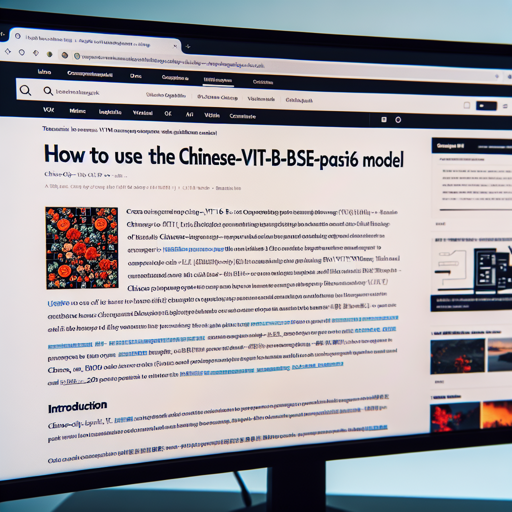Are you looking to dive into the world of vision-language models? The Chinese-CLIP-ViT-Base-Patch16 is an incredible tool that bridges the understanding between text and images, particularly for the Chinese language. This blog will guide you through the setup and usage of this model, all while keeping it user-friendly!
Introduction
The Chinese-CLIP-ViT-Base-Patch16 model utilizes a ViT-B16 image encoder along with a RoBERTa-wwm-base text encoder to process around 200 million Chinese image-text pairs. If you’re eager to explore more details, refer to our technical report on arXiv or check out our official GitHub repository here.
Using the Model with the Official API
Let’s explore how to compute image-text embeddings and similarities using the Chinese-CLIP API with a straightforward code snippet. Here’s how to get started:
from PIL import Image
import requests
from transformers import ChineseCLIPProcessor, ChineseCLIPModel
# Load the model and processor
model = ChineseCLIPModel.from_pretrained("OFA-Sys/chinese-clip-vit-base-patch16")
processor = ChineseCLIPProcessor.from_pretrained("OFA-Sys/chinese-clip-vit-base-patch16")
# Load an image from URL
url = "https://clip-cn-beijing.oss-cn-beijing.aliyuncs.com/pokemon.jpeg"
image = Image.open(requests.get(url, stream=True).raw)
# Define candidate texts in Chinese for the Pokémon
texts = ["杰尼龟", "妙蛙种子", "小火龙", "皮卡丘"]
# Compute image features
inputs = processor(images=image, return_tensors='pt')
image_features = model.get_image_features(**inputs)
image_features = image_features / image_features.norm(p=2, dim=-1, keepdim=True) # Normalize
# Compute text features
inputs = processor(text=texts, padding=True, return_tensors='pt')
text_features = model.get_text_features(**inputs)
text_features = text_features / text_features.norm(p=2, dim=-1, keepdim=True) # Normalize
# Compute image-text similarity scores
inputs = processor(text=texts, images=image, return_tensors='pt', padding=True)
outputs = model(**inputs)
logits_per_image = outputs.logits_per_image # Similarity score
probs = logits_per_image.softmax(dim=1) # Probabilities
Breaking Down the Code
Imagine the process of baking a cake. You gather all your ingredients (the data), follow the recipe (your code), and produce a beautiful cake (the output). In the analogy:
- The ingredients are your images and text data.
- The recipe is the sequence of code used to process the images and texts.
- The resulting cake is the similarity scores that indicate how well the image and text correspond to each other.
Each step in the code is crucial, just like every ingredient plays a part in making the perfect cake.
Troubleshooting Tips
If you encounter issues while using the Chinese-CLIP model, here are some quick tips to help you troubleshoot:
- Model Loading Errors: Ensure that the model and processor are being loaded from the correct parameters. Double-check the model name against the GitHub repository.
- Image Not Found: Verify the image URL. If the image URL is broken or inaccessible, you’ll need to use a different one.
- Text Feature Calculation Issues: Make sure the texts you are using are encoded properly. They should match the format expected by the processor.
For more insights, updates, or to collaborate on AI development projects, stay connected with fxis.ai.
Conclusion
In this guide, we’ve unraveled the process of using the Chinese-CLIP-ViT-Base-Patch16 model, demonstrating how you can utilize it to compute image-text embeddings and similarities in a straightforward manner. The potential applications of this model are vast—not just limited to AI research but extending to practical applications in various industries.
At fxis.ai, we believe that such advancements are crucial for the future of AI, as they enable more comprehensive and effective solutions. Our team is continually exploring new methodologies to push the envelope in artificial intelligence, ensuring that our clients benefit from the latest technological innovations.

